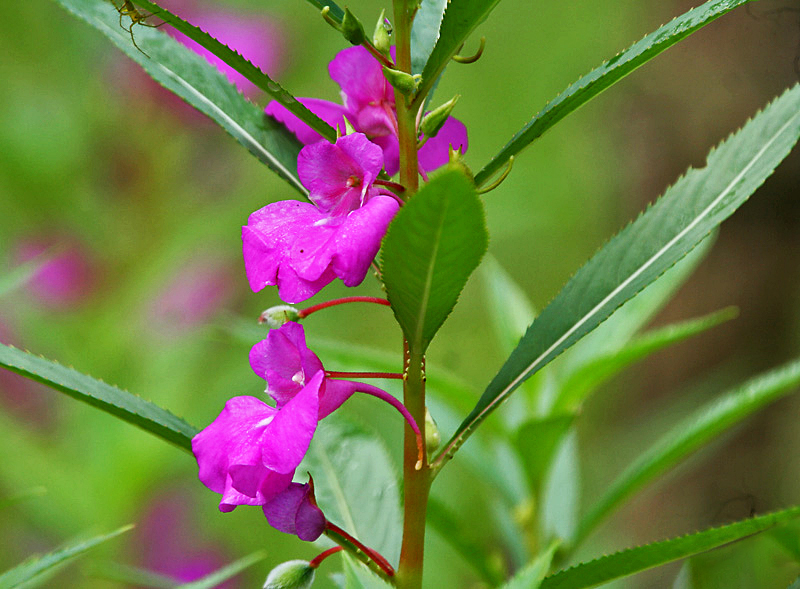|
Symplocaceae
Symplocaceae is a family of flowering plants in the order Ericales The Ericales are a large and diverse order of flowering plants in the asterid group of the eudicots. Well-known and economically important members of this order include tea and ornamental camellias, persimmon, ebony, blueberry, cranberry, l ..., including two genera, '' Symplocos'' and '' Cordyloblaste'', totalling about 260 known species. The common name for Symplocaceae is sweetleaf. Symplocaceae has a transpacific distribution that covers the Southeast United States, South America, Southeast Asia and Northern Australia. Plants in the family Symplocaceae are generally trees or shrubs, and are found in humid, tropical, montane forests within their range. Description The leaves of Symplocaceae are generally simple and are alternate or spirally arranged. The margin is either dentate, glandular-dentate, or entire. The petioles of the leaves lack stipules at the base. The flowers of Symplocaceae appear as an ... [...More Info...] [...Related Items...] OR: [Wikipedia] [Google] [Baidu] |
Symplocos Lucida
''Symplocos'' is a genus of flowering plants in the order Ericales. It contains about 300 species distributed in Asia and the Americas. Many species grow in humid tropical regions. This is sometimes considered to be the only genus in family Symplocaceae. Plants in this family are shrubs and trees with white or yellow flowers. The oldest fossils of the genus date to the lower Eocene of Europe and North America, with the genus being present in Europe as late as the Pliocene. Fossil seeds of †''Symplocos granulosa'' are frequent in sediment rock layers of the Late Oligocene to the Late Miocene of Denmark, Germany, Austria and Poland. The fossil seeds are very similar to the seeds of the extan southern Chinese species ''Symplocos glandulifera'' and ''Symplocos sulcata''. Fossil seeds of †''Symplocos paucicostata'' are known from the Middle Pliocene sediment rock layers in Reuver, the Netherlands and from the Late Pliocene sediment rock layers in northern Italy. The fossil seeds ar ... [...More Info...] [...Related Items...] OR: [Wikipedia] [Google] [Baidu] |
Ericales
The Ericales are a large and diverse order of flowering plants in the asterid group of the eudicots. Well-known and economically important members of this order include tea and ornamental camellias, persimmon, ebony, blueberry, cranberry, lingonberry, huckleberry, kiwifruit, Brazil nut, argan, sapote, azaleas and rhododendrons, heather, heath, impatiens, phlox, Jacob's ladder, primroses, cyclamens, shea, sapodilla, pouterias, and trumpet pitchers. The order includes 22 families, according to the APG IV system of classification. The Ericales include trees, bushes, lianas, and herbaceous plants. Together with ordinary autophytic plants, they include chlorophyll-deficient mycoheterotrophic plants (e.g., '' Sarcodes sanguinea'') and carnivorous plants (e.g., genus '' Sarracenia''). Mycorrhizal associations are quite common among the order representatives, and three kinds of mycorrhiza are found exclusively among Ericales (namely, ericoid, arbutoid and monotro ... [...More Info...] [...Related Items...] OR: [Wikipedia] [Google] [Baidu] |
Nikolaus Joseph Von Jacquin
Nikolaus Joseph Freiherr von Jacquin (16 February 172726 October 1817) was a scientist who studied medicine, chemistry and botany. Biography Born in Leiden in the Netherlands, he studied medicine at Leiden University, then moved first to Paris and afterward to Vienna. In 1752, he studied under Gerard van Swieten in Vienna. Between 1755 and 1759, Jacquin was sent to the West Indies, Central America, Venezuela and New Granada by Francis I, Holy Roman Emperor, Francis I to collect plants for the Schönbrunn Palace, and amassed a large collection of animal, plant and mineral samples. In 1797, Alexander von Humboldt profited from studying these collections and conversing with Jacquin in preparation of his own journey to the Americas. In 1763, Jacquin became professor of chemistry and mineralogy at the Mining Academy (Banská Štiavnica), Bergakademie Schemnitz (now Banská Štiavnica in Slovakia). In 1768, he was appointed Professor of Botany and Chemistry and became director of ... [...More Info...] [...Related Items...] OR: [Wikipedia] [Google] [Baidu] |
Flowering Plant
Flowering plants are plants that bear flowers and fruits, and form the clade Angiospermae (). The term angiosperm is derived from the Ancient Greek, Greek words (; 'container, vessel') and (; 'seed'), meaning that the seeds are enclosed within a fruit. The group was formerly called Magnoliophyta. Angiosperms are by far the most diverse group of Embryophyte, land plants with 64 Order (biology), orders, 416 Family (biology), families, approximately 13,000 known Genus, genera and 300,000 known species. They include all forbs (flowering plants without a woody Plant stem, stem), grasses and grass-like plants, a vast majority of broad-leaved trees, shrubs and vines, and most aquatic plants. Angiosperms are distinguished from the other major seed plant clade, the gymnosperms, by having flowers, xylem consisting of vessel elements instead of tracheids, endosperm within their seeds, and fruits that completely envelop the seeds. The ancestors of flowering plants diverged from the commo ... [...More Info...] [...Related Items...] OR: [Wikipedia] [Google] [Baidu] |


